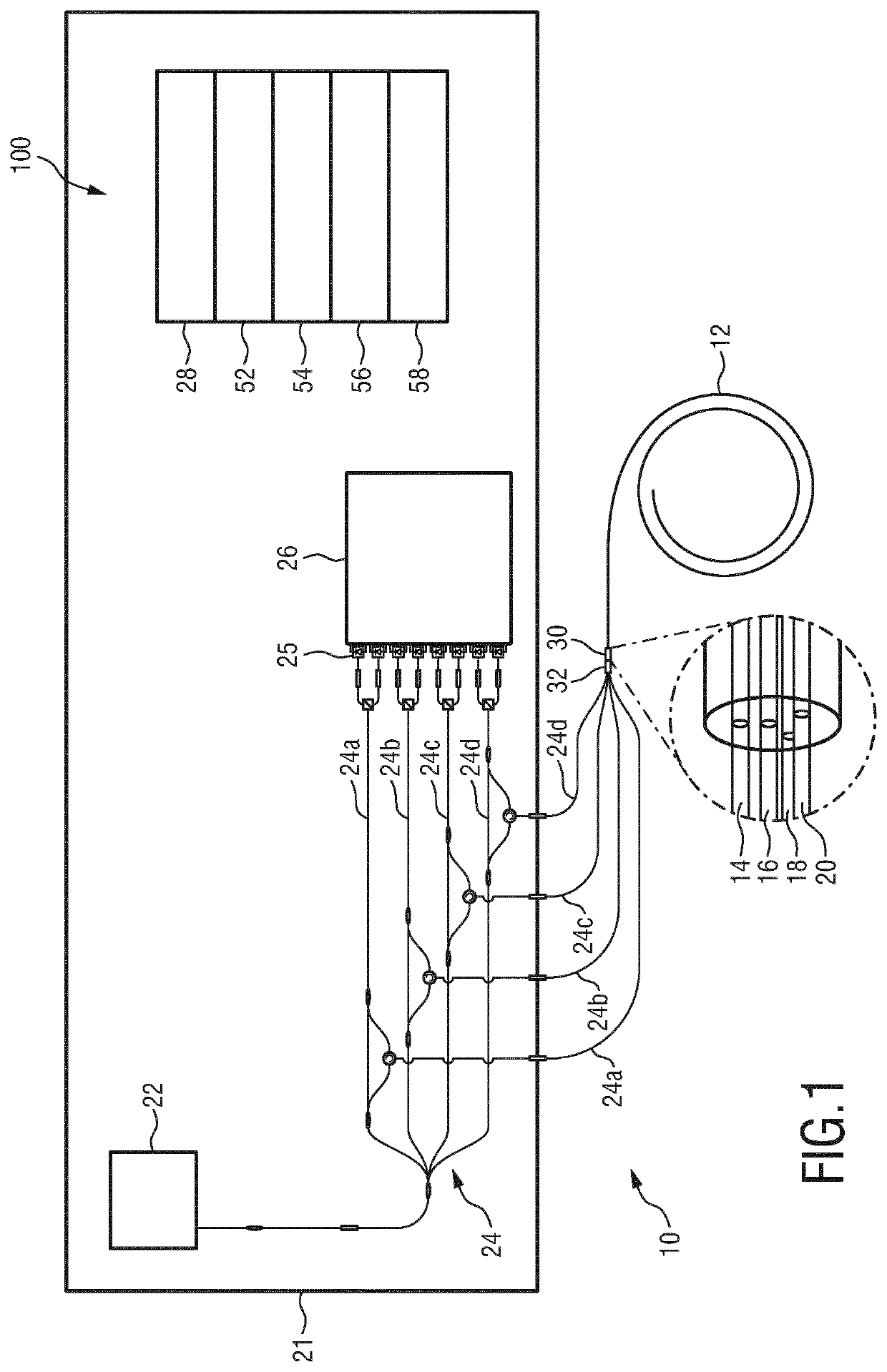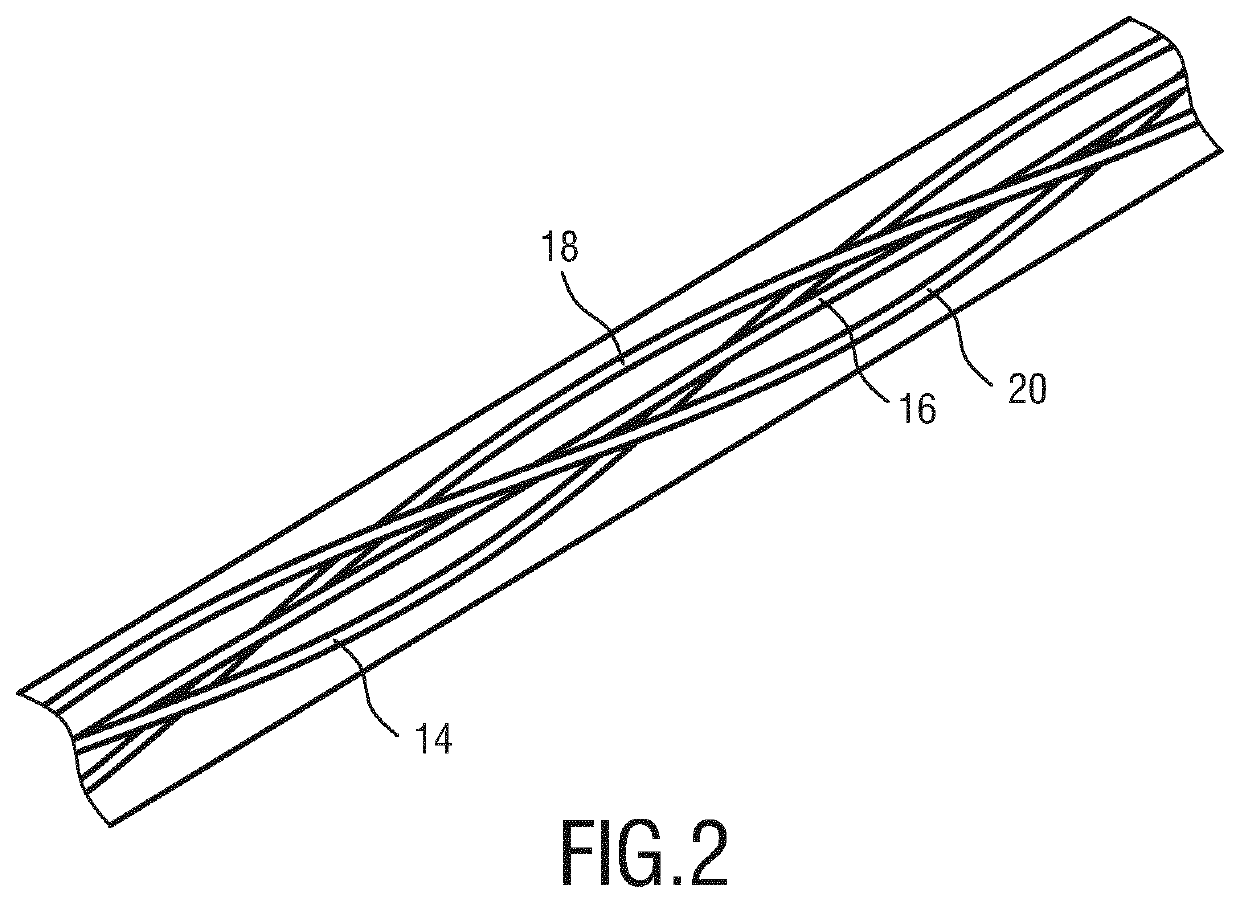Methods and systems for optically connecting an optical fiber sensor to an optical shape sensing console
a technology of optical fiber sensor and optical shape, applied in the field of optical shape sensing, can solve the problems of exposing patients and medical teams to harmful ionizing radiation, unable to provide critical information about the three-dimensional shape of the medical instrument projection, and using a keyed connector, etc., to achieve the effect of reducing the risk of ionizing radiation exposure and reducing the risk of ionizing radiation
- Summary
- Abstract
- Description
- Claims
- Application Information
AI Technical Summary
Benefits of technology
Problems solved by technology
Method used
Image
Examples
Embodiment Construction
[0073]In the following, embodiments of a method of and a system for optically connecting an optical fiber sensor to an optical shape sensing console with a correct mutual assignment of the fiber cores and calibration data used in optical shape sensing. The method and system according to the invention is advantageous in shape reconstruction of an optical fiber sensor in three dimensions. Shape reconstruction using an optical fiber sensor may be performed by an optical shape sensing system, an embodiment of which will be first described with reference to FIG. 1.
[0074]As far as not indicated otherwise, an optical fiber sensor can be an optical fiber itself or a device having an optical fiber integrated into the device. Such a device may be, for example a guidewire, a catheter, an endoscope or the like.
[0075]FIG. 1 shows parts of an optical shape sensing system 12 configured as a multi-channel optical frequency domain reflectometry (OFDR)-based distributed-strain sensing system for sens...
PUM
 Login to View More
Login to View More Abstract
Description
Claims
Application Information
 Login to View More
Login to View More - R&D
- Intellectual Property
- Life Sciences
- Materials
- Tech Scout
- Unparalleled Data Quality
- Higher Quality Content
- 60% Fewer Hallucinations
Browse by: Latest US Patents, China's latest patents, Technical Efficacy Thesaurus, Application Domain, Technology Topic, Popular Technical Reports.
© 2025 PatSnap. All rights reserved.Legal|Privacy policy|Modern Slavery Act Transparency Statement|Sitemap|About US| Contact US: help@patsnap.com



